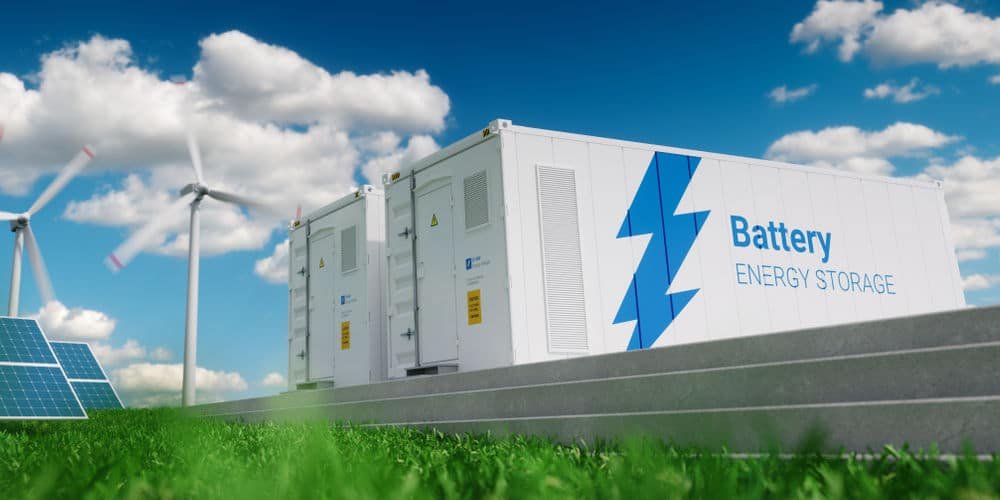Battery Energy Storage Systems (BESS) are playing a transformative role in the renewable energy landscape. This article explores the concept of BESS, its significance in revolutionizing renewable energy, advancements in battery technology, applications of BESS, environmental benefits, challenges, and future outlook.
Understanding Battery Energy Storage Systems (BESS)
- Definition and Function: BESS refers to systems that store electrical energy in batteries for later use. They store excess energy during periods of low demand and supply it during peak demand or when renewable energy generation is low.
- Components of BESS: A typical BESS consists of batteries, an inverter system, control and monitoring systems, and a connection to the electrical grid. The batteries store and release electricity, the inverter converts DC power to AC power, and the control systems manage energy flow and system performance.
- Types of Battery Technologies Used: Various battery technologies are used in BESS, including lithium-ion, lead-acid, flow batteries, and emerging technologies like solid-state batteries. Lithium-ion batteries are the most commonly used due to their high energy density, efficiency, and declining costs.
The Role of BESS in Revolutionizing Renewable Energy
- Addressing Intermittency and Grid Stability: Renewable energy sources like solar and wind are intermittent, making grid stability challenging. BESS provides a solution by storing excess energy and discharging it when renewable generation fluctuates, ensuring a stable and reliable power supply.
- Enhancing Energy Flexibility: BESS enhances energy flexibility by enabling load shifting and peak shaving. Excess energy generated during low-demand periods can be stored and utilized during high-demand periods, reducing strain on the grid and optimizing energy usage.
- Facilitating Renewable Integration: BESS facilitates the integration of renewable energy into the grid by smoothing out fluctuations in generation and providing backup power during periods of low renewable output. It enables higher penetration of renewables and reduces reliance on fossil fuel-based backup power.
Advancements in Battery Technology
- Increasing Energy Density: Battery technology advancements focus on increasing energy density, allowing for higher energy storage capacity in a smaller physical footprint. This leads to more compact and efficient BESS installations.
- Improving Efficiency and Lifespan: Ongoing research and development aim to improve the efficiency and lifespan of batteries used in BESS. Enhanced battery management systems and optimized charging and discharging algorithms contribute to higher efficiency and longer battery lifetimes.
- Reducing Costs: Battery costs have been declining rapidly, driven by economies of scale, technological advancements, and increased manufacturing capacity. This cost reduction makes BESS more economically viable and accelerates its adoption in renewable energy projects.
Applications of BESS
- Grid-Scale Energy Storage: BESS is deployed at grid scale to provide peak shaving, load balancing, and ancillary services. Large-scale BESS installations support grid stability, accommodate renewable integration, and enhance the overall reliability of the electricity system.
- Commercial and Industrial Use: BESS finds applications in commercial and industrial settings, where it helps optimize energy consumption, reduce demand charges, and provide backup power during grid outages. It enables businesses to manage energy costs and enhance energy resiliency.
- Residential Energy Storage: Increasingly, homeowners are installing BESS to store excess energy from solar panels and use it during the evenings or during power outages. Residential BESS provides energy independence, cost savings, and a greener lifestyle.
Environmental Benefits of BESS
- Carbon Emissions Reduction: BESS plays a vital role in reducing carbon emissions by enabling higher integration of renewable energy sources, displacing fossil fuel-based power generation. It helps decarbonize the electricity sector and contributes to mitigating climate change.
- Integration with Clean Energy Sources: BESS complements clean energy sources like solar and wind by storing and releasing energy when it is most needed. This maximizes the utilization of renewable energy and reduces reliance on polluting sources.
- Promoting Sustainable Energy Transition: BESS supports the transition towards a sustainable energy future by enabling the efficient use of renewable resources, reducing reliance on fossil fuels, and promoting a decentralized and resilient energy system.
Battery Energy Storage Systems are revolutionizing the renewable energy sector by addressing intermittency, enhancing energy flexibility, and facilitating the integration of renewable sources. Advancements in battery technology, declining costs, and expanding applications are driving the adoption of BESS. With its environmental benefits, BESS plays a crucial role in the transition to a sustainable energy future.









